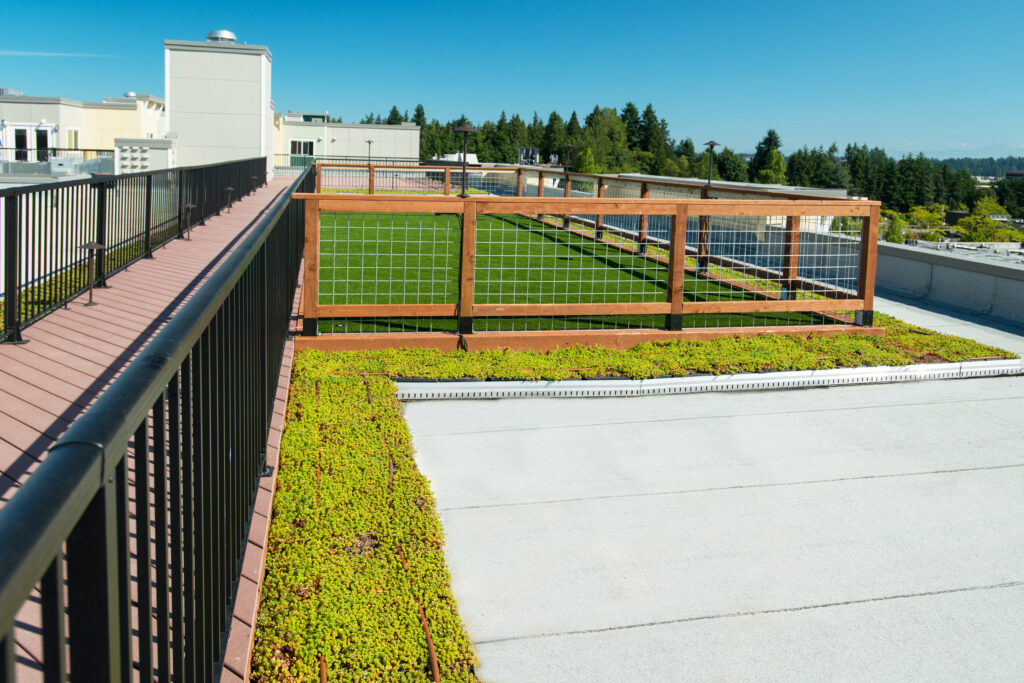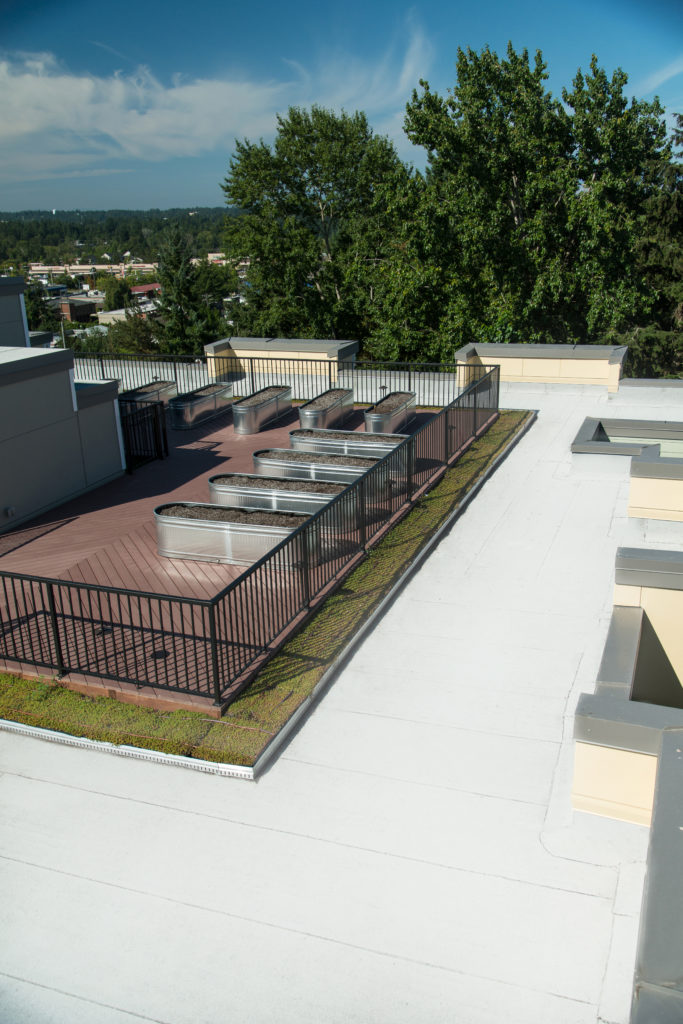The rooftop is a common meeting place for seniors living at SHAG (Senior Housing Assistance Group) properties in the Pacific Northwest. SHAG—the largest provider of affordable homes in Washington State— designs its buildings with rooftop access to provide residents with ways to build community cohesion while enjoying the outdoors.
For the new five-story property in Lynnwood, Wash.—a metropolitan city located 16 miles north of Seattle—SHAG selected a vegetative or green roof. The new home for more than 300 seniors features a 50,000-square-foot rooftop with areas for pets, barbeques and raised vegetative trays for cultivating gardens. The multi-level roof also includes a furnished deck.
“Building owners are realizing that the roof can be more than a cover for their facilities and are choosing roofs that provides social, economic and environmental benefits,” said Dustin Kathol, a third-generation roofing contractor and owner of 3-D Roof Systems based in Edmonds, Wash.
Over the years, there has been a steady increase of vegetative roofs in the U.S. and Washington in contributing to the growth. Green Roofs, an organization that promotes and inspires earth friendly technology, reports that over 36 million square feet of vegetative roofs and walls were installed as of October 2017. While initially more expensive to install than a standard roof, over time vegetative roofs can increase property values, extend the longevity of roofing materials, decrease life-cycle cost, and cool and insulate the building.
Many cities provide incentives to install vegetative roofs to help manage storm water runoff. A leading cause for water pollution, storm water flows off solid surfaces and collects pollutants such as oil, pesticides, sediments, bacteria, and other chemicals, and then deposits them into waterways. With a vegetative roof in place, rainfall that is captured on the roof evaporates or is absorbed by plants.
3-D Roof Systems headed the project and partnered with roofing and waterproofing materials manufacturer, Polyglass U.S.A., Inc., to design the roof. Founded in the early 1950s by the Kathol family, 3-D Roof Systems is a skilled team of certified contractors. Because of their long-term relationships with suppliers, 3-D Roof Systems quickly mobilized resources to bring the roof to life.
“We have a legacy of commitment to our customers and have earned their trust over the past 60 years,” said Kathol. “Working closely with Polyglass allowed us to provide SHAG with timely information and options that met budget and aligned with their vision for the roof.”
Backed by a 30-year warranty, the three-ply modified bitumen system chosen provides the critical waterproofing needed for a vegetative roof assembly. At 500-mils thick, the system adds layers of defense for the roof and enables long-term performance. In comparison, singly ply membranes typically have a 60 mils total thickness.
Products include two layers of Polyglass’ Polyflex® Smooth APP (Atactic Polypropylene) modified bitumen membrane for the base and interply sheets. For the final layer, Polyflex® G White APP cap sheet was installed to provide resistance to punctures, tears, abrasion, foot traffic and the elements. Elastoflex® SA V—a high performing self-adhered membrane featuring Polyglass’ ADESO® Technology was used for the flashing details.

3-D Roof Systems began the roof installation in October 2016, which according to the Seattle Times had record breaking rainfall. But 3-D Roof Systems was prepared for the inclement weather. The team used a system of inflatable tenting adapted for use on the roof to work around the weather. As they completed sections of the roof, the tent was moved to new areas that needed to be worked on.
With their lean approach to project management, 3-D Roof Systems completed the Lynnwood City Center Senior Living on time and within budget. 3-D Roof Systems focused on the needs of the customer, worked closely with suppliers to source quality solutions, and used innovative solutions to overcome installation challenges.
